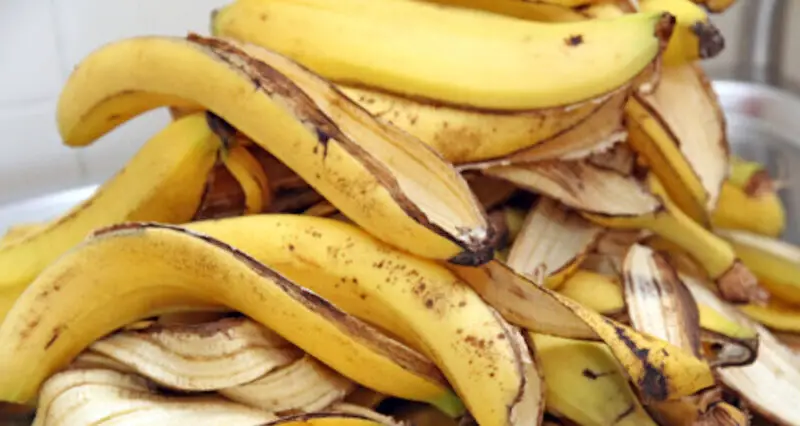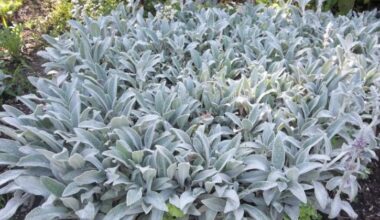It would be a shame to throw your banana peels in the garbage when they offer multiple possibilities both in the garden and at home. Natural fertilizer, household shine products or even cosmetics, discover the secret world of banana peels!
Contents
6 ways to use your banana peels in the garden
1. For compost
Whether you have a compost pile or a vermicomposter, it is advisable to add banana peels to it. They can be whole, chopped, soaked or made into liquid manure. Banana peels provide plenty of nutrients that are essential for the quality of the compost.
If you put whole banana peels in the compost, make sure you bury them deeply so as not to attract small animals such as rats or weasels for example.
2. To improve your soil
You can use banana peels to improve the soil in your garden or vegetable garden in autumn. In particular, when you prepare spring flower beds, or in winter vegetable squares. You can also put banana skins in uncultivated soil all winter long in preparation for spring.
Cut the skins into small pieces, put them in the soil and stir them. The pieces should be scattered all over the soil. If you put whole skins, be sure to bury them deep under the mulch to avoid attracting small nocturnal mammals.
3. To stimulate seedlings
If you plant seeds outdoors, you can give them a little boost by adding a banana peel. To do this, dig a 2 inch deep trench long enough to put the banana peel in it. Lay the banana peels flat with the inside up, then place the seeds on top.
Cover with some well-ventilated soil, water lightly, and do as usual to take care of the seedlings. With this enriched and well-drained soil, the seeds will germinate and take advantage of the fertilizer created by the rotting banana peels.
4. For a vertical garden
When creating a vertical garden, place a whole banana peel at the bottom of the container. Then cover with moss and put the plant on top. As the banana peel decomposes, its nutrients will be released for the plants to enjoy. Be aware that ferns are very fond of banana peels, for example.
5. As an aphid repellent
Did you know that banana peels are an excellent aphid repellent? Aphids are small insects that can decimate an entire garden in record time. It is therefore important not to have any in your garden or vegetable garden.
To control aphids, place pieces of banana peel just under the soil below the plants.
6. To have beautiful roses
To have a beautiful rose bush with beautiful flowers, bury a banana peel at its base when planting. Why bury a banana peel? Because roses need the potassium contained in the banana peel to grow.
How to compost banana peel
The banana peel participates in the development of microorganisms that play an essential role in the composting process. Its richness in potassium, magnesium and iron allows it to improve plant growth, stimulate rooting and awaken the colors of the flowers. That is why it is highly prized as a fertilizer.
In order to use the banana peel in compost, it is advisable to cut it into small pieces in order to activate the decomposition process. Then simply throw it into the silo or compost heap.
Cow dung mixed with banana peels produces a compost containing more than 2% nitrogen (N) and 10% potassium (K).
Some mistakes to avoid in the preparation of compost with bananas
1. Do not put only kitchen waste
Compost is an alternation of green and brown waste, or wet and dry waste. In other words: vegetable and fruit peelings and dead leaves, small branches or paper-cardboard. If you only put in kitchen waste, you risk having a compost that is too wet, and therefore a lot of gnats.
The ideal is to follow a mix of 40% green waste for 60% brown waste. For example, a shovelful of dead leaves should be put in with each supply of vegetable peelings.
2. Do not mix the compost
Good compost should be mixed regularly, ideally once a week. This way, you make it breathe and mix the fermenting materials with the fresher ones. Harvest your compost about twice a year, in early spring and fall, and spread it in your vegetable garden: it is an excellent natural fertilizer.
3. Avoid excessive amounts of organic waste
Can we put everything in the compost? No: we avoid certain organic waste in too large quantities that can unbalance it. For example:
- Not too many citrus peelings, too acidic ;
- Not too many avocado or pineapple skins, too hard;
- Potato peelings are to be cut into pieces;
- Egg shells are to be crushed into small pieces.
The smaller, the better!
This way, we advise you to cut the banana peels into small pieces before incorporating them into your preparation!
4. Avoid food leftovers
Avoid food scraps, especially meat or fish with bones and bones, which can attract rodents or pests to your compost. Also avoid feeding them to your dog or cat!
Similarly, mussel or oyster shells do not compost.
Summary
Banana peels in the garden is a first choice fertilizer because it is full of potassium, an element necessary for the flowering and fruiting of plants.
Simply cut it into strips and bury them at the base of flowering ornamental plants. Roses will particularly appreciate this treatment.









